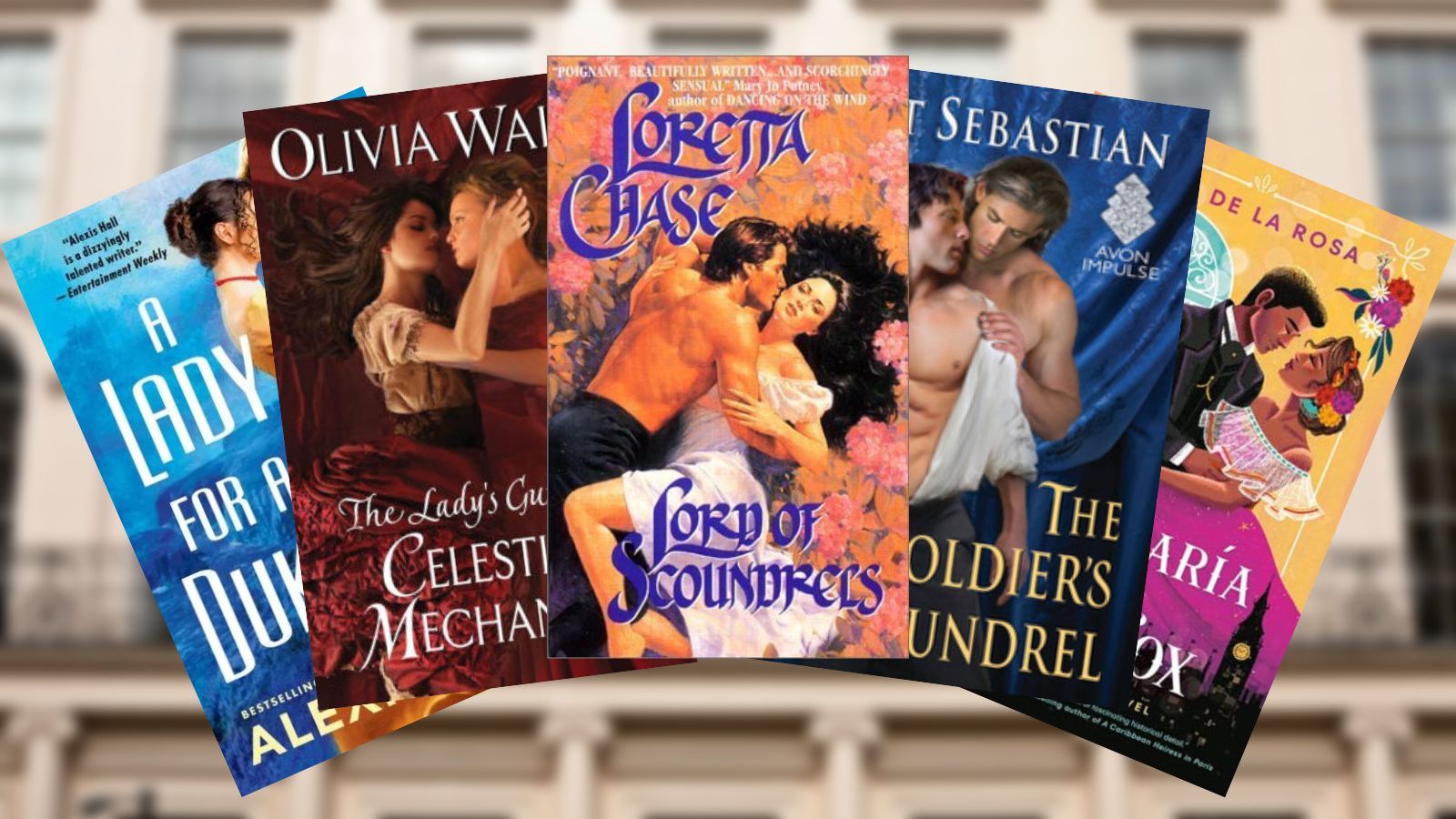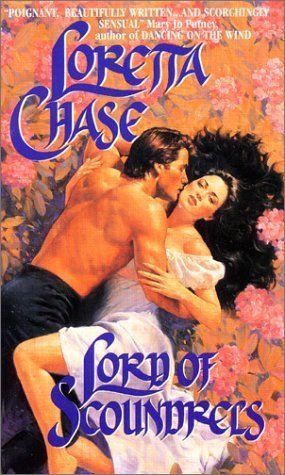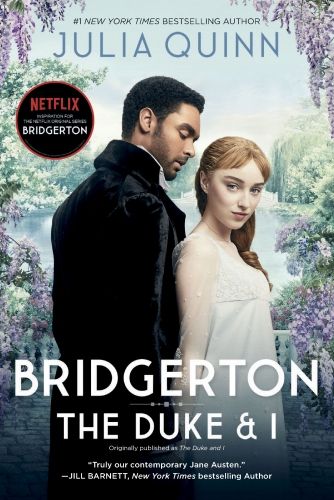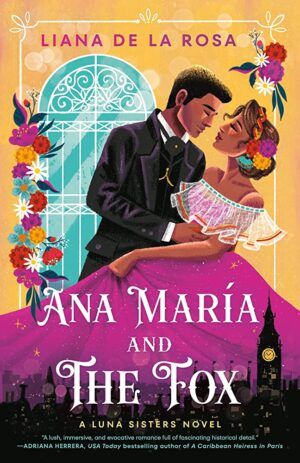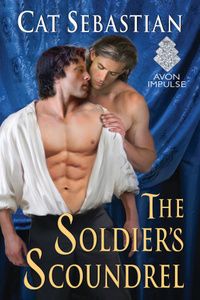What is Regency Romance?
It’s the most familiar image to anyone who’s glancingly familiar with a romance novel: a woman with long, flowing hair and a long, flowing dress (probably with at least one sleeve hanging off a shoulder) being clutched by a bare-chested man, who probably doesn’t have long, flowing hair, but is wearing some tight breeches and tall boots…and maybe a billowing shirt?
Alternatively, there might just be a single woman in a billowing dress, which covers most of the book’s cover in a striking color. Or a single man with high pecs and tight abs, a white linen shirt draped over him like a cloak. There have been several iterations of the proper groupings for a romance cover, and we’ve seen some change while others held onto successful habits.
Either way, this couple you’re imagining is probably in a Regency romance, which is the most popular historical subcategory in the greater romance novel world.
Sure, there are Western historicals and Viking romances, and a bunch of Victorians cropping up here and there. The Medieval romance, while very big in the ’80s and ’90s, is at a bit more of a trickle nowadays.
But somehow, 90% of historical romance takes place in the nine-year period (yes, you read that right, NINE) between 1811 and 1820 in which the Prince Regent, who would eventually become George IV, ruled over England in place of his father, George III — who was still alive but dealing with both mental and physical illness. And of course, if you’ve watched Bridgerton, you’re familiar with Queen Charlotte, mother and wife to the two Georges, who acted as the king’s guardian and performed royal duties until she died in 1818.
What is the Regency period?
Okay. So Regency is actually applied to the time between 1795 and 1837 when Queen Victoria took the throne. It includes basically the entire time between the moment George III became unable to rule and the moment Victoria became queen, including the reigns of the two Hanover kings, George IV and William IV. We do see books set in the “late Regency,” post-1820, but the sweet spot seems to be between 1812 and 1819. Britain would be in the midst of the Napoleonic Wars, or our protagonists would have been somehow affected by their end in 1815. The larger dresses of the Georgian period were replaced with slimmer lines, and the Industrial Revolution hadn’t yet made London (and other English cities) a terrible place to be if you wanted to breathe. The economy had taken a hit from countless wars in America and Europe, but the slave trade had not yet been abolished. And the Prince Regent’s penchant for frolicking and excess would offer a perfect setting for games of the heart.
The Regency of the Real World and the Regency of the Romance World are very different, of course. If you read the description of every Regency romance written in the last 20 years, the majority of it would be, in the words of my fellow Rioter R. Nassor, “a bunch of white straight people bouncing around the ton.” And of course, very little of the genre gets anywhere near addressing the fact that a large portion of royal funds are connected to the sale of enslaved people, whether or not any of the protagonists were involved directly in the act of enslaving. The past few years have brought us more middle and working-class representation, but we’re still drowning in dukes, earls, and foreign royals. It’s an alternate universe version of Jane Austen’s world, where mothers’ worries about their daughters’ futures are sheer frivolity, and true poverty is only something Other People have to deal with.
Why The Regency?
So why is this such a popular era? Why are there more Regency-era dukes in historical romance than the total current population of Rhode Island?
We have two people to thank for that: Jane Austen and Georgette Heyer.
(We can talk about the latter’s virulent antisemitism at another time. I’ll reference her work here for the purposes of providing a history of Regency romance.)
Pride and Prejudice, considered the proto-romance, was published in 1812. Many readers envision the events taking place in the same year, and film adaptations tend to follow the same theory. Most specifically, the 1995 A&E/BBC miniseries adaptation starring Jennifer Ehle and Colin Firth. The romantic courtship (or lack thereof) of Elizabeth Bennet and Fitzwilliam Darcy has had extreme staying power, and was many of our introductions to the Regency period, whether in text, on film, or (in some cases) in fan fiction. The eruption of Regency romances in the mid-’90s no doubt had a great deal to do with publishing’s realization that people were seeking more stories much like that of Lizzy and Mr. Darcy, all with ever-increasing stakes.
I hear you saying “but Jess, there are absolutely no dukes in Pride and Prejudice; even Darcy’s relative is just an earl!”
That, friends, was born out of These Old Shades by Georgette Heyer.
Heyer made a name for herself in the middle of the 20th century by writing romance and mysteries, mostly set in the Regency era. She made the deliberate decision to elevate her characters in the social hierarchy from Austen’s landed gentry to peers of the realm. These Old Shades introduce us to the Duke of Avon, the first of many aristocrats and members of various royal families that Heyer would write. And even though historical romance spent the next several decades branching into other eras, Regency stood at the center. Heyer’s books have been touted as the origin of the modern romance genre (Woodiwiss notwithstanding), so it would make sense that generations’ worth of romance authors would be inspired and build a historical sandbox to share.
I talked to a few romance authors who write or have written Regency romance about why people are so drawn to the era.
Julia Quinn, author of The Duke and I and creator of Bridgerton, believes it’s in part based on its placement in history. “It’s far enough in the past that it’s imbued with a fairytale-like quality in ways that something set in the 20th or 21st centuries can’t be,” she says. “But it’s modern enough that I can make my characters think and act in ways that resonate with contemporary readers.” Quinn has been writing Regency romance for well over two decades and has probably had a hand in building the modern playbook for Regency authors, especially with the adaptation of her popular Bridgerton series. And very much the way Heyer began it, Quinn’s female protagonists, in particular, have more 20th and 21st century sensibilities.
Liana De La Rosa thinks it’s a little more complicated than that. The author of the Once Upon a Scandal series and 2023’s Victorian-era Ana María and the Fox thinks people are drawn to them “because they’re often told through a rose-colored lens that glosses over the uncomfortable social, political, and racial realities of the time.” But her friend and fellow writer Elizabeth Bright thinks it almost helps to bring issues of feminism and agency to the forefront without feeling overwhelmed with today’s climate. “I think when a contemporary romance focuses on feminism,” she says, “it feels tired. Because I am tired! This is our daily life! But dress it up with a waltz and a stern duke and suddenly it feels fresh.” This setting helps to tackle subjects like economic security and patriarchal structures in a more subtle and palatable way to readers (especially if they’re white). As a reader, Rioter Grace Lapointe agrees: “I think the best regencies […] can use the sub-genre to talk about modern issues.”
The Soldier’s Scoundrel author Cat Sebastian, who writes queer romances set primarily in the Regency, thinks that for readers and writers, another thing that brings people to the genre is how easy it is to start. “Regency has the draw of being a familiar world; there’s very little barrier to entry.” While there is still some necessary worldbuilding, the average reader understands how clothing and transportation work, and has some general understanding of what the Aristocracy might be — which honestly isn’t that necessary because Regency Romance has its own hierarchy that is far from what actually existed. But because of this, the draw is always to see what an author is going to do differently — and it’s something that keeps us coming back, either to the same author or to brand new ones.
Many romance authors have done endless research when it comes to making their Regency romances feel like the true historical setting, even if the stories they tell are just as unlikely as a superhero film or prestige drama. It’s about making sure the layers are properly laid, the meals reflect what might have been grown and raised, and the travel time is right for a coach-and-four instead of a car or railroad. They might look at what laws were being passed in Parliament and what demonstrations were happening in the North. They might not actually apply the information in Debrett’s Peerage & Baronetage but they have definitely put it to good use in other ways. They’ve made it so seamless to move around in that there is a Regency Romance Canon that readers look for when reading anything set in the early 19th century. And the modern propensities of the main characters are a big part of that. Since, you know, there are modern people reading it.
“Part of the enjoyment is seeing what kind of spin the author puts on these familiar archetypes and tropes,” Sebastian argues. “People have been saying for ages that Regency romance is just Heyer fanfic or Austen fanfic, and of course they mean this dismissively, but I think it might be true in a positive sense.”
(I mean, I can totally get behind that, as someone who read Austen fanfic for years and who definitely leans into enemies-to-lovers in any era. The best stories are written with love, and the core element of fanfic is the love of the original.)
Of course, Cat also went into Regency to subvert the genre — and we can definitely see the lines that were laid from the 2015 release of The Soldier’s Scoundrel to now! But, she says, “it can’t be a coincidence that the Regency, as it exists in genre romance, is pretty homogeneously white, vaguely Christian, and super rich. It’s also surprisingly apolitical, given how preoccupied the actual time period was with various political movements.” This fake Regency that romance writers and publishers have created is “awfully safe […] for readers looking for frictionless escapism,” a point that she and Liana De La Rosa agree on. While many readers, new and old, might be delighted by the bounds some corners of the sub-genre are taking when it comes to expanding our vision of the time period, others still will continue to push back against things that are “historically inaccurate” or “identity politics.” With the climate we live in, I doubt that will change much, but I and many of my peers intend to boost those that are doing something new and different in the genre.
(We haven’t even gotten into the whole question of why the biggest historical romance category in the United States is heavily about the British Aristocracy and why the vast majority of Regency authors are American. Why not another time period? Why not American history? The short answer? Slavery. The longer answer has a lot to do with the “elevated” existence of that fantasy world where everyone was healthy, wealthy, and white. But we also can’t discount the money. Authors follow the money.)
Where Should I Start with Regency Romance?
This has already gotten incredibly long, so why not just dive into a few Regencies that are pushing the boundaries of race, class, gender and sexuality, and the depiction of the squeaky-clean aristocracy? Whether you’ve read a lot or never picked one up in your life, you’ll find something to love here.
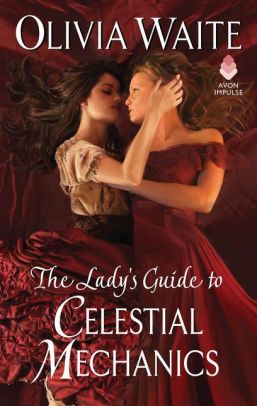
The Lady’s Guide to Celestial Mechanics by Olivia Waite
Olivia Waite might be a familiar name to some thanks to her romance column in The New York Times, but she also has a series of sapphic Regency romances! This first one introduces us to Lucy, a scholar who wishes to be recognized in the misogynist science community, and Catherine, the Countess of Moth, who is looking for someone to translate an important astronomy manuscript. When Lucy goes to work for the Countess, the two can’t help their attraction to each other, but their positions and positioning would never allow them to be together.
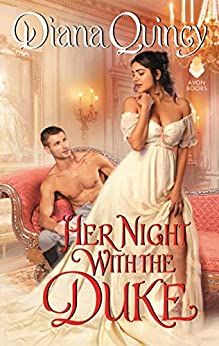
Her Night With the Duke by Diana Quincy
This first book in Quincy’s Clandestine Affairs trilogy sets the stage for a rollicking good time across three books. Here, Leela gets stranded in a roadside inn one night and ends up having quite the night with a stranger. Come to find out, he’s actually courting her stepdaughter! Per Rioter Grace Lapointe, this book is “sexy, a little angsty, and has a female [main character] that I would go to war for; she carries a knife and takes absolutely no shit from anyone. I love her.” I don’t know that this Diana Quincy heroine can outshine my darling Hanna, who is the protagonist of Quincy’s follow-up book The Viscount Made Me Do It, but we’ll agree to disagree.
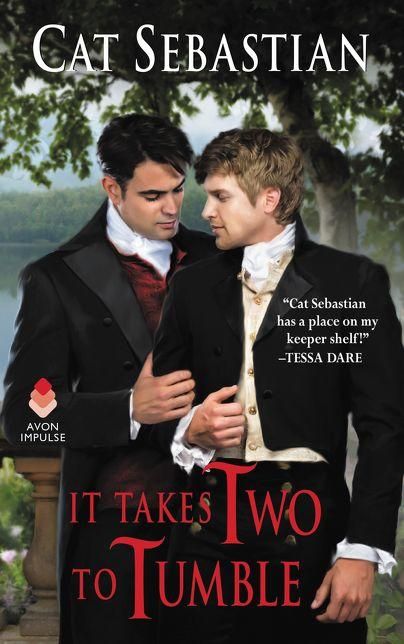
It Takes Two to Tumble by Cat Sebastian
Country vicar Ben enjoys the quiet life, but can’t say no when he accidentally ends up caring for the children who live on the nearby estate in their widowed father’s absence. But when the handsome sea captain returns, he’s surprised to discover not the stern caretaker he left, but the cheerful, neighboring vicar, who has somehow gotten his hellion children in line. The pair shouldn’t act on their attraction, but alas. How can one help it when joy long lost might find its way back?
(Does this story sound familiar? Like maybe it was inspired by a Musical Governess Romance? I bet it does!)
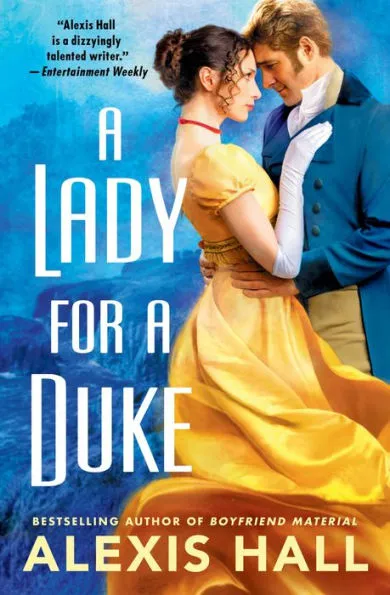
A Lady for a Duke by Alexis Hall
Remember how I mentioned the Napoleonic Wars? They have a key role in the setup of this book! Viola, thought lost at Waterloo, takes advantage of her assumed death to finally live. Sure, it means giving up money, title, and friendship — including the companionship of her best friend, Justin de Vere. When she discovers that her old friend has shut himself away in his grief, she’s determined to venture to his reclusive manor to help both Justin and his sister. But how does she help the man she loves most in the world when she can’t tell him who she really is?
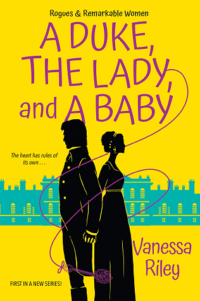
A Duke, The Lady, and a Baby by Vanessa Riley
Vanessa Riley has been writing Regency romance for a long time, but this is her first traditionally published title, the first in a series of several books with longish catchy titles. Patience is a West Indian heiress and widow who, in the midst of several events gone wrong, had her infant son taken away from her and placed under the guardianship of the Duke of Repington. When she finds her way into his household to act incognito as the child’s nanny, the two come to find a new kind of companionship in each other. But secrets and outside dangers put everything in jeopardy, including Patience’s ability to be with her son. This one is far from the historical romp many might expect when picking it up, and Dr. Riley uses the extensive research she has used to write more weighty historical fiction like Island Queen to build a Regency England that feels closer to what we might consider the real thing.
This is, of course, the tip of the iceberg — there are authors like KJ Charles, who basically established Gay Regency as a thing, and Rose Lerner, who writes Jewish characters, and C.L. Polk, whose Regency-inspired book The Midnight Bargain is a masterclass in linking history and magic. Tessa Dare’s stories are funnier than most things being touted as romcoms. Erica Ridley’s Wyld Winchesters pull heists and shenanigans. Sarah MacLean. JJ McAvoy. Scarlett Peckham. Loretta Chase. There are Regency romances with mysteries to be solved, steamy Regency romances, and married couples playing pranks on each other. There are Regencies with protagonists fighting PTSD and dealing with other mental health issues. There are Regencies set in gambling dens and manor houses and slums. There are underwater gazebos and scarred recluses and seditious activists. There are troubled marriages entertaining the idea of a Third. There are girls in white dresses with blue satin sashes. Snowflakes that lay on their noses and eyelashes. Silver white winters —
Okay. Whoops. Got a little carried away there.
So why should you read Regency romance? It’s pretty easy to get into, and by the fourth mention of chemises and curricles you might even know what they are. You might learn a bit about history, no matter how many times I’ve said the setting is Not Quite Historical. Everything is glamorous, much as billionaires’ lives are in contemporary romance. But everyone has Feelings Deep Down and their love stories are irresistibly juicy and swoon-worthy. Rioter Isabelle Popp knows it’s not good to glamourize the trappings of colonialism, but “reading about the details of gowns and balls and dalliances in an orangerie” keeps her coming back. Truly, there’s something about the magic of that alternate universe that does it for us all.
Looking for more? Check out this list of books to read after watching Bridgerton! And you can always find recommendations on the Romance page. Bon chance and happy reading!
